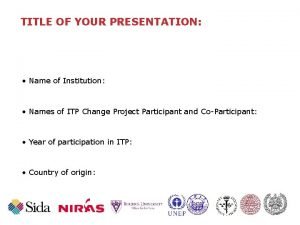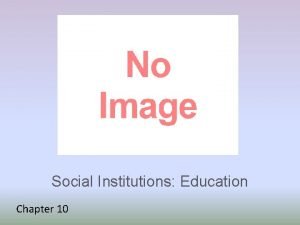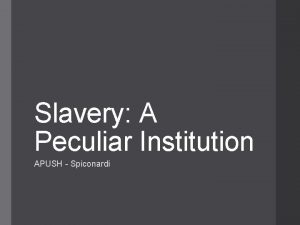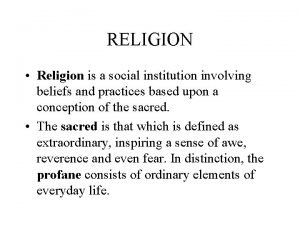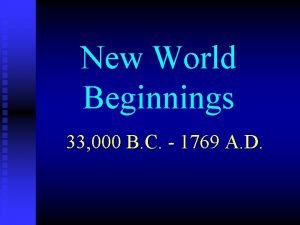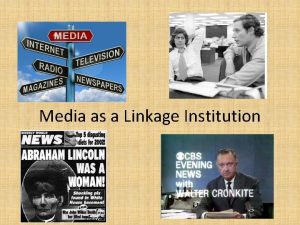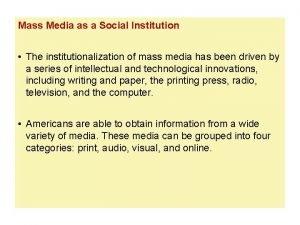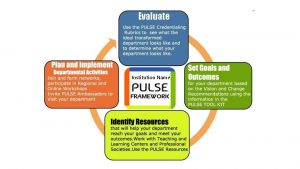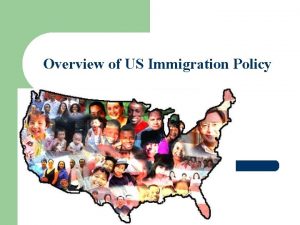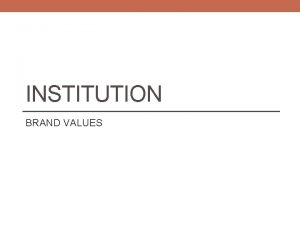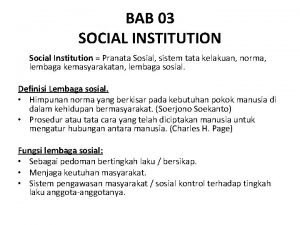Immigration Policy Issue Name Institution Overview of Immigration

















- Slides: 17

Immigration Policy Issue Name Institution

Overview of Immigration Policy Immigration has played a crucial role in American history since 1800 s. Today's percentage of immigrants is similar to the late 19 th century when almost 15% of U. S. residents were immigrants. Policymakers must weigh competing economic, security, and humanitarian concerns. Currently, President Trump is taking extraordinary actions to curb illegal immigration. Some cities have passed laws aimed at driving out undocumented immigrants.

Overview of Immigration Policy Issue Nearly 34 million lawful immigrants live in the United States. Many live and work in the country after receiving lawful permanent residence while others receive temporary visas available to students and workers. In addition, roughly 1 million unauthorized immigrants have temporary permission to live and work in the U. S. through the Deferred Action for Childhood Arrivals and Temporary Protected Status programs.

Removal vs. Unauthorized Immigrants in 2017

Evolution of Social Movements The evolution of the Immigrant rights movements was caused by a series of events: The introduction of HR 4437 bill The evolution of the immigrant rights movements was also fueled by growing anti-immigrant sentiment. The immigrant rights movements have undergone significant evolution Since the last passage of immigration law reform in the 1980 s

Evolution of Social Movements Continued. . In 2006, movements’ activity rose to the highest level in response to antiimmigration legislation passed by House of Representatives. The immigrant rights movements spearheaded some of the largest mass protests in U. S. history, Over 2 million people took to the streets to join demonstrations against the anti-immigration bill in the spring of 2006.

Effect of Immigration Policy In 2016, there were 43. 7 million immigrants in the United States. In 2015, the U. S. granted 69, 920 immigrants refugee status Immigration has a negative effect on workers without a college degree. Immigration lowers wages and drive out native-born workers in those areas. The immigration policy causes psychological issues to immigrant families.

Immigration statistics Source: migration policy institute (n. d. )

Immigrant workforce in the United States

Evolution of Federal Legislation on Immigration On November 21, 2014, president Barack Obama signed two executive actions: the Deferred Action for Parents of Americans and the Deferred Action for Childhood Arrivals. In March 2018, Trump administration terminated the Temporary Protected Status (TPS) and Deferred Enforced Departure DED In July 2018, the Trump administration imposed the “zero tolerance policy. ”

Current Political Landscape on Immigration Policy The current politics on politics of immigration is a combination of past and present events, economics of migration and human rights discourse. The government shutdowns in the recent months indicates political division on immigration policy. Political leaders’ positions on the issue of immigration can be a important determinant of their electoral success or failure. Politicians are divided on whether the United States should fund president Trump’s proposal for a border wall with Mexico.

Political players in the national Immigration debate The main players in the immigration policy debate include: President Speaker Trump of the House-Nancy Pelosi House Majority leader-Kevin Mc. Carthy House Minority Whip-Steny Hoyer

Applying Sociological Theory The symbolic interactionism theory can be used to explain why some political players are more powerful Key political player such as the president, Speaker of the House, minority whip and majority leader hold symbolic positions. The office of the president in general, incites respect and reverence in many Americans. The speaker of the house position commands respect from all Congressmen and congresswomen.

How uncertainty in political and legal environments affects stakeholders The uncertainty in legal environment regarding qualification for asylum status affects Immigrant rights movements. The uncertainty in political environment where immigrants are connected with terrorism. The president’s proposal for a fundamental change in how foreign nationals are selected to enter the US.

Tactics used to further the Cause The common tactic used to further the cause of immigrant rights movement is protests. Persuasion Boycotts Sit-down strike

Questions "Ninety percent of illegal immigrants are on the public dole. Why are we giving welfare benefits to people who aren't citizens? “ "Mexicans are taking away our jobs. What is the best way to stop them? "

References Steil, J. P. , & Vasi, I. B. (2014). The new immigration contestation: Social movements and local immigration policy making in the United States, 2000– 2011. American Journal of Sociology, 119(4), 1104 -1155. retrieved from https: //www. jstor. org/stable/10. 1086/675301 Thiede, B. C. , & Brooks, M. M. (2018). Child poverty across immigrant generations in the United States, 1993– 2016: Evidence using the official and supplemental poverty measures. Demographic Research, 39, 1065 -1080. Retrieved from https: //www. jstor. org/stable/26585361 Center for Immigration Policy. (n. d. ). Historical Overview of Immigration Policy. Retrieved from https: //cis. org/Historical-Overview-Immigration-Policy Cohn, D. (2015, September 30). How U. S. immigration laws and rules have changed through history. PEW Research. Retrieved from https: //www. pewresearch. org/fact-tank/2015/09/30/how-u-simmigration-laws-and-rules-have-changed-through-history/ Pierce, S. , Bolter, J. , & Selee, A. (2018). U. S. Immigration Policy under Trump: Deep Changes and Lasting Impacts Migration Institute. (n. d. ). Senior Immigrants in the United States. Retrieved from https: //www. migrationpolicy. org/article/senior-immigrants-united-states
 Formal institution and informal institution
Formal institution and informal institution Institution name example
Institution name example Name all the rays
Name all the rays A custodial institution for young offenders.
A custodial institution for young offenders. Words of institution
Words of institution Words of institution
Words of institution Title and institution
Title and institution Sports as social institution
Sports as social institution Affective nurturance-love examples
Affective nurturance-love examples Social institution education
Social institution education Peculiar institution apush
Peculiar institution apush The most widespread religion
The most widespread religion The institution of encomienda allowed the
The institution of encomienda allowed the What is a linkage institution
What is a linkage institution What comes to your mind if you heard the word institution
What comes to your mind if you heard the word institution Is media a social institution
Is media a social institution Linkage institution
Linkage institution L'institution saint malo
L'institution saint malo






